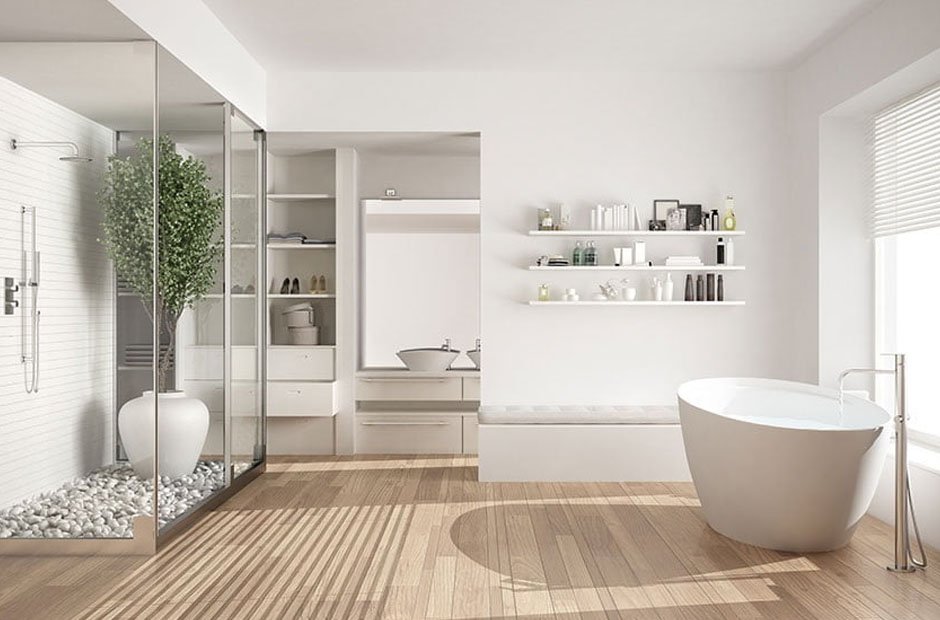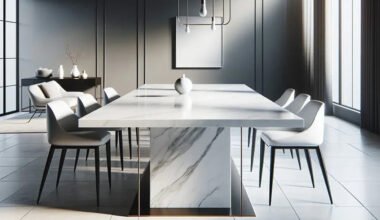A well-executed Bathroom Renovation can do more than just freshen up your space—it can improve functionality, comfort, and even the value of your home. Whether you’re tackling a full gut job or just updating key elements, planning is everything. This guide walks you through each stage of the renovation process so you can move forward with confidence and clarity.
Planning and Budgeting
Before you start picking out tiles or browsing faucet finishes, take a step back. What’s the goal of your renovation? Do you want a more modern look, better storage, or improved comfort? Maybe it’s all of the above.
Once you’re clear on your goals, sketch out a realistic budget. Even if you’re handy and planning to do some of the work yourself, there are always hidden costs—tools you didn’t think of, extra materials, or surprises behind the walls. A solid budget keeps things from spiraling out of control and gives you a roadmap to follow.
Design and Layout
Bathrooms might be small, but they’re some of the most complex rooms to renovate. Smart design makes all the difference. Think about how the space flows. Are there pinch points? Is it easy to move around? Will the door swing hit the vanity?
If you’re working with a compact layout, look for ways to open it up—wall-mounted sinks, floating vanities, or a curbless shower can free up valuable room. And if accessibility is a factor, things like wider doorways or lever-style handles can make the space more comfortable for everyone.
Plumbing and Electrical Considerations
Underneath the finishes, the real work begins with plumbing and electrical. Moving fixtures like toilets or showers means reworking plumbing lines, which can be complex. If your home’s wiring is older, this might also be the right time to upgrade outlets, lighting, or add underfloor heating.
It’s also important to check local building codes. Most significant updates will require permits, and failing to get them can lead to headaches down the road.
Heating and Comfort Upgrades
Adding radiant floor heating might sound like a luxury, but in a bathroom, it makes a noticeable difference—especially on cold mornings. These systems are designed to work under tile or stone floors and provide consistent warmth without taking up space.
Paired with a programmable thermostat, radiant heat can be both efficient and comfortable. It’s one of those upgrades that people rarely regret once it’s in place.
Shower Systems: Functionality Meets Aesthetics
Your shower is probably the most used area in the bathroom, so it pays to get it right. Whether you go for a standard drain or a sleek linear option, your choice will affect not only the look of the shower but also how water flows and drains.
Pre-sloped pans and integrated waterproofing membranes can save time during installation and help ensure your shower is sealed properly. It’s one of those details that’s easy to overlook but critical to long-term performance.
Waterproofing Essentials
One of the biggest mistakes in any Bathroom Renovation is skimping on waterproofing. Moisture doesn’t just stay in the shower—it finds its way into corners, behind tiles, and under floors if you’re not careful.
High-quality waterproofing membranes, vapor barriers, and sealants are non-negotiable. Apply them correctly, and you’ll prevent mold, mildew, and costly repairs down the line. Pay special attention to seams, corners, and transitions—those are the usual trouble spots.
Choosing the Right Tile and Installation Materials
Tile is where design meets durability. Porcelain is a popular pick because it’s dense, non-porous, and holds up well in wet areas. Ceramic offers plenty of design flexibility, while natural stone brings in character and texture—but usually needs more maintenance.
Use the right materials to install it all. A high-quality mortar, flexible grout, and the right adhesive for your substrate are key. Invest in the right tools, too. Tile installation is as much about precision as it is about patience.
Ventilation and Mold Prevention
Even with top-tier waterproofing, poor ventilation can lead to mold and mildew. Bathrooms need air movement—especially if they’re used frequently or don’t have windows.
Installing a high-quality exhaust fan with a humidity sensor or timer helps manage moisture levels. It’s a small component that plays a huge role in the longevity of your renovation.
Storage and Functional Fixtures
A beautiful bathroom still needs to be functional. Think about how much storage you actually need and where you can fit it. Recessed shelving in the shower, under-sink cabinets, and vertical storage can all help keep things organized without crowding the room.
Fixtures should do more than just look good—they should fit your routine. Easy-to-clean faucets, quiet-close drawers, and thoughtfully placed towel hooks all contribute to a more user-friendly space.
Lighting Design for Every Mood
Lighting can make or break the atmosphere of a bathroom. It’s not just about brightness—it’s about placement and layers. Combine overhead lighting with task lighting around mirrors and subtle accent lights to create a space that works at any time of day.
LEDs are a smart choice for their longevity and energy efficiency. Dimmers give you added control, allowing the space to shift from energizing in the morning to relaxing at night.
Eco-Friendly Renovation Ideas
If you’re thinking long-term, sustainability should be part of the plan. Water-saving fixtures, low-flow showerheads, and dual-flush toilets reduce waste without sacrificing performance.
Energy-efficient lighting and radiant heating can also lower your utility bills. And choosing materials made from recycled or renewable sources helps reduce your renovation’s environmental footprint.
Final Touches and Finishes
The final stretch of a renovation is all about details. Trim pieces, grout color, and even the shape of a handle can elevate the whole design. Profiles and edging strips provide clean transitions between materials and help protect tile edges from chipping.
Mirrors, towel bars, and hardware are easy to swap out later, but if you coordinate them with your design from the beginning, you get a more cohesive look.
Common Bathroom Renovation Mistakes to Avoid
Some mistakes show up immediately—others take months to reveal themselves. One of the most common issues is poor waterproofing. Another is incorrect slope in the shower floor, which can lead to pooling water and even leaks.
Storage often gets overlooked during the planning stage, as does lighting. Skipping these elements can leave you with a space that looks nice but doesn’t work well in real life.
Maintenance Tips Post-Renovation
Once the work is done, keep your bathroom looking fresh with regular maintenance. Clean grout lines and re-seal them annually if needed. Use gentle cleaners to preserve your finishes.
Check your caulking every few months, especially around the shower and tub. Well-maintained silicone seals can prevent water from getting into places it shouldn’t. And don’t forget to test your exhaust fan regularly to make sure it’s still pulling moisture out of the room.
Main Key Takeaways
- Thoughtful planning is the foundation of any successful Bathroom Renovation
- Waterproofing, ventilation, and heating aren’t just extras—they’re essentials
- Design choices should prioritize both function and style
- Ongoing maintenance protects your investment long after the work is done
FAQs
What should I focus on first during a bathroom renovation?
Start with layout and infrastructure—plumbing, electrical, and waterproofing. These elements are harder to change later and have the biggest impact on function.
Can I install radiant floor heating myself?
It’s possible if you’re comfortable with electrical work, but following manufacturer instructions closely is crucial. Otherwise, it’s best left to a pro.
Is tile the best choice for bathrooms?
Tile is durable and water-resistant, which makes it ideal for wet spaces. Just make sure to choose the right type and pair it with quality installation materials.
How long does a bathroom renovation typically take?
It depends on the scope, but most full renovations take between 2 to 4 weeks once construction begins—assuming everything goes smoothly.



